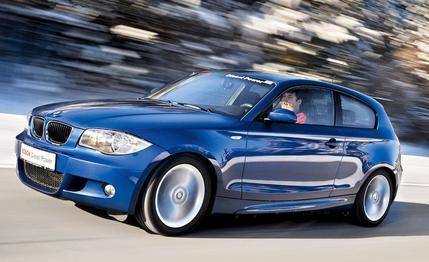
 Short Take Road Test
Short Take Road Test


We imagine rampant chest thumping at BMW’s U.S. headquarters as its product planners finalized the scheme to sell the obscenely torquey 335d here. But BMW sells many powerful four-cylinder diesels in Europe. Wouldn’t the larger fuel-economy payoff of a smaller engine, and its lower price, be worth a sacrifice in the performance of the 3-series diesel?
Our friends at Robert Bosch Corporation loaned us a 123d, which houses the most powerful of BMW’s diesel fours. Surpassing the 100-hp-per-liter benchmark—virtually unheard of in the diesel world—this sequentially turbocharged, 2.0-liter four-cylinder produces 201 horsepower. Just as shocking is its 295 pound-feet of torque, equaling that of the M3’s V-8.
Scooting to 60 mph in 6.7 seconds seems plenty quick for a fuel miser, and although diesels are often lazy to respond to a blip of the throttle, the immediacy of the 123d elicited reports of spontaneous heel-and-toe downshifting. At highway speeds, the 123d responds like a V-8, and its 50-to-70-mph passing time of 6.8 seconds matches that of the mighty Audi R8 supercar.
There is some compromise, however. On zero-degree mornings, the 123d idles with the violence of a four-cylinder running on three, and it’s noisier than less powerful diesels, such as the Jetta TDI.


As to fuel economy, in European ratings the 123d gets nearly 30 percent better mileage than the 335d (there’s currently no 323d). Since 1- and 3-series models get nearly identical fuel-economy ratings, we figure a 3-series with this engine could achieve an EPA combined fuel economy of about 35 mpg. We saw highway averages in the low 40s and 36 mpg overall.
BMW says the humongous costs associated with meeting ultra-strict U.S. emissions meant that it wasn’t feasible to certify more than one diesel here, and that lone engine had to work for both the 3-series and the X5 SUV, which, unfortunately, ruled out this four-cylinder. That’s logical, but we still pine for a 40-mpg 3-series.